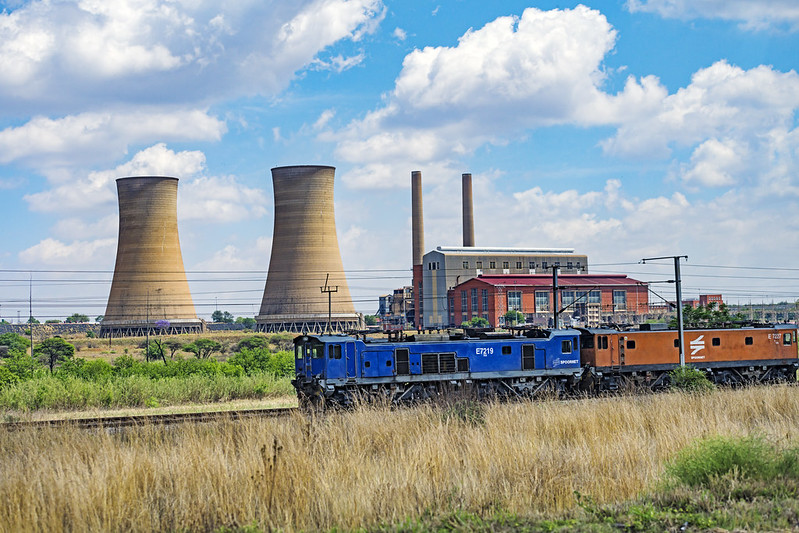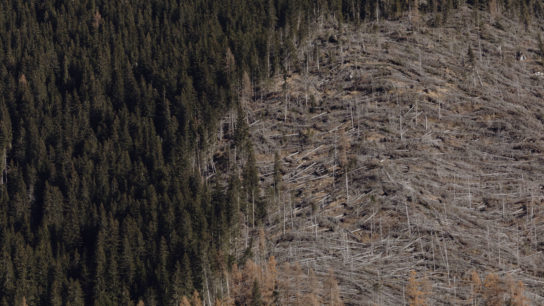Over 90% of South Africa’s power currently comes from coal, however it plans to get this down to 46% by 2030, and down to 30% by 2050. The country’s new energy plan envisions wind power supplying 15% of its electricity by 2030, solar 11% and hydro 10%, topped up with 16% gas and 1 GW of new coal plant. The cabinet of South Africa has recently approved a goal to reduce greenhouse gas emissions to net zero by 2050, but how can it do this while still burning coal?
—
In February, the South African government released its “low emission development strategy” (LEDS), calling it “the beginning of our journey towards ultimately reaching a net zero economy by 2050.” The strategy draws together existing policies, planning and research across economic sectors; among these is the Integrated Resources Plan (IRP), which is how the country plans its electricity supply.
While the IRP outlines a transition from coal to renewable energy sources like solar and wind, 5 000 MW of coal power capacity is forecast to still be operating in 2050. Further, new coal power stations are under construction in Kusile and Medupi, with another 1 000 MW expected to come online by 2030.
As the coal industry employs many people in South Africa- around 87 000– the government has emphasised the importance of a “just transition” to clean energy, finding miners alternative employment. However, trade unions in South Africa, many of whose members work in coal mining and in Eskom, the state-controlled coal-based power utility, don’t like the Independent Power Project approach being used to develop renewable energy as it’s all private-sector led. They fear that their jobs will be replaced by less well-paid and less secure employment. As unemployment approaches 30% in the country, this is a valid concern.
You might also like: Microplastics Found Near Summit of Mount Everest

A cooling tower in Soweto, Johannesburg (Source:Flickr)
Eskom is trying to ease these fears. Mandy Rambharos, Eskom’s head of just energy transition, says “We can’t be irresponsible. As we are shutting down plants, how do we replace that so that we have the electricity options still but also ensure that we’re not impeding on socio-economic development?”
The government plans to close down old coal power plants and invest in renewable energy; the LEDS says that South Africa has “favourable conditions for wind power” and is “ideal for solar power.”
The government is also trying to get renewables built by private companies through its Renewable Energy Independent Power Producer (REIPP) scheme, which has so far mobilised over $15bn of investment.
However, Secretary of the Climate Justice Coalition Alex Lenferna said the scheme had taken off between 2014 and 2016 but there had been no bids and no large-scale renewables projects since then, calling the country’s renewables policies “a shambles.” He adds that renewable energy is being artificially capped “in order to force in new coal, more gas and also try and get nuclear into the mix. So we’re pushing for more expensive energy so we can support coal rather than embracing low-cost renewable energy.”
Global Divestment From Coal
A 2019 report from the Institute for Energy Economics and Financial Analysis (IEEFA) warned that new energy technologies will replace coal-fired power faster than predicted.
Eskom and Sasol, which together mine nearly two thirds of the 250 million tonnes of coal produced by South African mines each year, are planning to curb their use of the fossil fuel.
Further, major coal importers like India, Pakistan and South Korea- which together account for more than half of South Africa’s coal exports- are either transitioning away from coal or have limited growth potential. Meanwhile, wind and solar power are rapidly becoming the cheapest source of new generation in many countries and will be cheaper than coal or gas-fired plants by 2030.
Additionally, three major banks in South Africa- Nedbank, Standard Bank and FirstRand- have all indicated they will not finance either of two new coal power plants planned by independent power producers – Thabametsi and Khanyisa – putting both projects at risk. Many of Eskom’s old coal-fired power plants are already in “cold storage,” unlikely to ever come into service again.
The Need to End Coal- The Highveld Region
The Highveld region in the province of Mpumalanga has about half of the country’s recoverable reserves and some of South Africa’s most polluted air. The region is home to 12 coal-fired power plants and a refinery that produces liquid petroleum from coal, the latter of which produces more greenhouse gas emissions than entire countries like Norway or Portugal.
Residents of the town often develop asthma, bronchitis or lung cancer as a result of the coal mines, coal-fired power plants, petrochemical facilities, metal smelters, chemical producers and other industrial complexes that riddle the region.
Researchers estimate that heightened air pollution levels in the region cause hundreds of early deaths every year. A 2019 Greenpeace report ranked the region among the highest in the world for emissions of sulfur dioxide and nitrogen dioxide, two dangerous pollutants.
In 2019, environmental groups, including groundWork and the Vukani Environmental Movement, filed lawsuits against the South African government for its failure to clean up the air pollution, arguing that it violates the residents’ constitutional right to “an environment that is not harmful to their health and wellbeing.” The case will be heard next May and is the first court case in South Africa to challenge air pollution on the basis of this constitutional right, but will likely not be the last.
David Boyd, a UN specialist on human rights and the environment, says that it could make tackling air pollution a human rights obligation, saying that “right now, it’s not clear that the right to a healthy environment includes the right to breathe clean air.”
The Highveld’s poor air quality is a problem that the South African government has recognised for more than a decade. In 2007, the government classified a 12 000 sq miles portion of the region as an air pollution hotspot and priority area that required special air quality action. In 2012, the government published an air quality management plan that outlined goals to bring air quality into compliance with national standards by 2020. However, little progress has been seen and the majority of the set goals haven’t been achieved.
Air pollution in the Highveld regularly exceeds South Africa’s national air quality standards. In 2008, particulate matter sized 2.5 microns or less exceeded air quality standards on at least 103 days. These particles can get into the lungs and bloodstream, causing a variety of illnesses, including cardiovascular disease and cancer. Because the country’s air quality standards are weaker than those of the WHO, these extreme levels present a significant health hazard.
Further, a 2019 analysis estimated that, at their peak, sulfur dioxide and nitrogen dioxide levels in the Highveld’s industrial region are 10 times higher than the WHO considers safe for human health.
However, despite these analyses, air quality monitoring is lacking; many of the region’s monitoring stations are not functional, meaning that without accurate data on the region, air pollution is likely worse than predicted.
GroundWork says that the ongoing pollution in the Highveld is linked to industrial activity that benefits the country’s elites; close ties between members of the ruling party of South Africa- the African National Congress- and the coal sector have perpetuated the dirty substance’s dominance in the energy mix, enriching a few to the detriment of many. The first half of the 20th century saw Eskom use coal to provide low-cost electricity to gold and diamond mining operations. Additionally, during the apartheid era, the government built more coal-fired power plants and created Sasol to turn coal into fuel.
Today, the government allows some of the region’s biggest polluters to dodge compliance with emissions limits. In 2013, Eskom applied to postpone compliance at 11 coal-fired power plants in the Highveld, which the government largely granted. Eskom was also involved in former President Jacob Zuma’s corrupt use of public enterprises. Further, in 2015, while Zuma was in office, the utility awarded a lucrative contract to a mining company owned by his son and his wealthiest supporters, the Gupta family, despite its low quality coal. Eskom continues to submit additional applications to postpone, suspend or alter emissions limits at some of its plants, which are being reviewed. From April 2016 to December 2017, Eskom exceeded its emissions limits for particulate matter, sulfur dioxide and nitrogen oxides more than 3 000 times, according to an analysis by the Centre for Environmental Rights.
For now, coal will remain the dominant element of South Africa’s energy mix until at least 2030. It is hoped that a favourable court ruling in the 2019 lawsuit will force the government to hold polluters accountable, but so far, the government’s track record isn’t promising.
Like every signatory to the Paris Agreement, South Africa must submit its updated climate plan to the UN by the end of 2020, however this will likely be delayed due to COVID-19. According to Rambharos, stakeholders will be consulting on it “soon” and it should go to government and parliament early next year and be finalised by June 2021.
Featured image by: Flickr

















